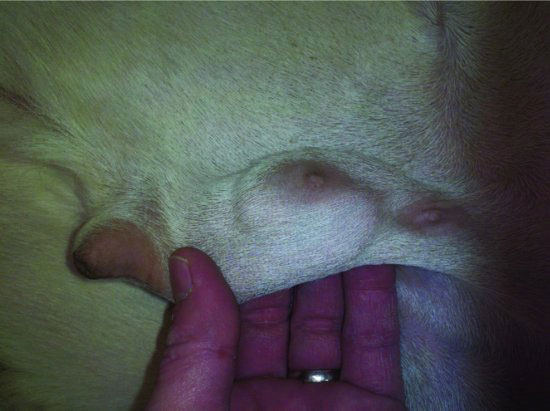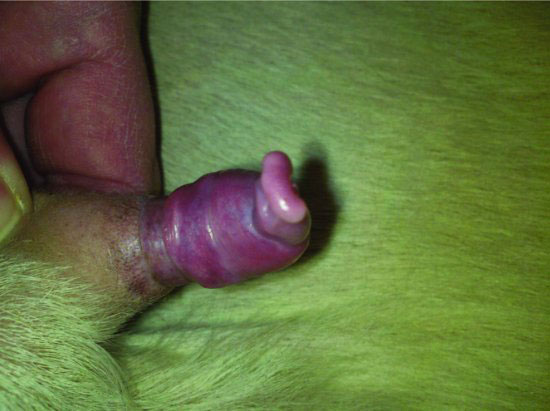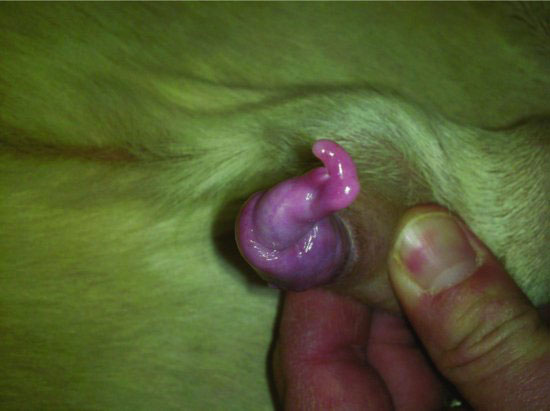Figure 59.2 Retraction of the flaccid fibrovascular penis results in the formation of a sigmoid flexure in the penis. This is located along the ventral midline ventral to the pelvis.

Figure 59.3 Extension of the penis and prepuce from the sheath in an alpaca. The glans penis (diamond) and cartilagenous process (solid arrow), prepuce (star), and sheath with preputial orifice (circle) are seen.

Figure 59.4 The cartilaginous process (solid arrow) serves to facilitate intromission of the penis through the cervix during breeding. The urethral opening (open arrow) is located at the base of this process.

Llamas and alpacas have two prominent and paired accessory sex glands: bulbourethral and prostate. The bulbourethral glands are spherical structures located dorsal and lateral to the pelvic urethral at the level of the ischial arch. These glands are found immediately cranial to the anus and bulbospongiosus muscles. The bulbourethral gland has a duct that empties the secretions into the urethral diverticulum during ejaculation. The urethral diverticulum is a blind pouch extension of the urethra and is located caudal to the ischial arch and extends from the caudal margin of the urethra. A “flap” of urethral mucosa prevents retrograde flow of secretions, semen, and urine. For this reason, the bladder, normally, cannot be catheterized retrograde from the tip of the penis. The bilobed prostate glands are located immediately caudal to the vas deferens and trigone region of the bladder. These glands are oval in shape and extend dorsal and lateral from the dorsal surface of the pelvic urethra. These glands should be symmetrical, and ultrasound measurements of their dimensions should be within 10% of the contralateral gland.
Libido (Breeding Behavior and Aggressiveness)
Many factors can adversely affect breeding behavior, and these often make evaluation of libido difficult. Breeder data on duration of breeding is useful for evaluation of changes in libido. Overuse of males decreases semen quality and may decrease conception rates. Breeding studs may show different behaviors in a pasture breeding setting as opposed to those males that are housed separately from females. The stud that runs with the herd continuously may exhibit more seasonality in its breeding activities. Through the use of pasture breeding, studs will be less aggressive and may be more selective of the females that they breed. Breeding studs that are exclusively used in hand-mating scenarios will often demonstrate more aggressive libido. During breeding, the male will sit down behind the female with the hind limbs completely flexed and resting on the surface of his foot pads and hocks. As the stud sits behind the female, he will “clasp” her around the neck with his front limbs. This action provides a neural stimulus to the female, which helps induce ovulation of an existing follicle. The macho will emit variable sounds during breeding termed orgling. As the male inserts his penis through the cervix, he will begin to thrust the rear quarters, termed “ejaculatory thrusts.” Duration of copulation in llamas and alpacas ranges from 10 to 60 minutes. Short duration breeding may decrease the probability of conception.
Stay updated, free articles. Join our Telegram channel

Full access? Get Clinical Tree


